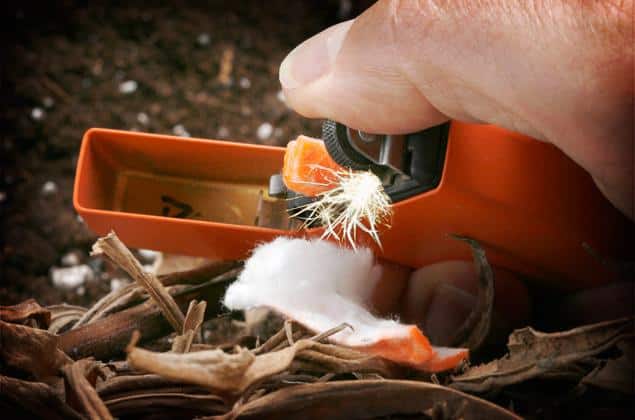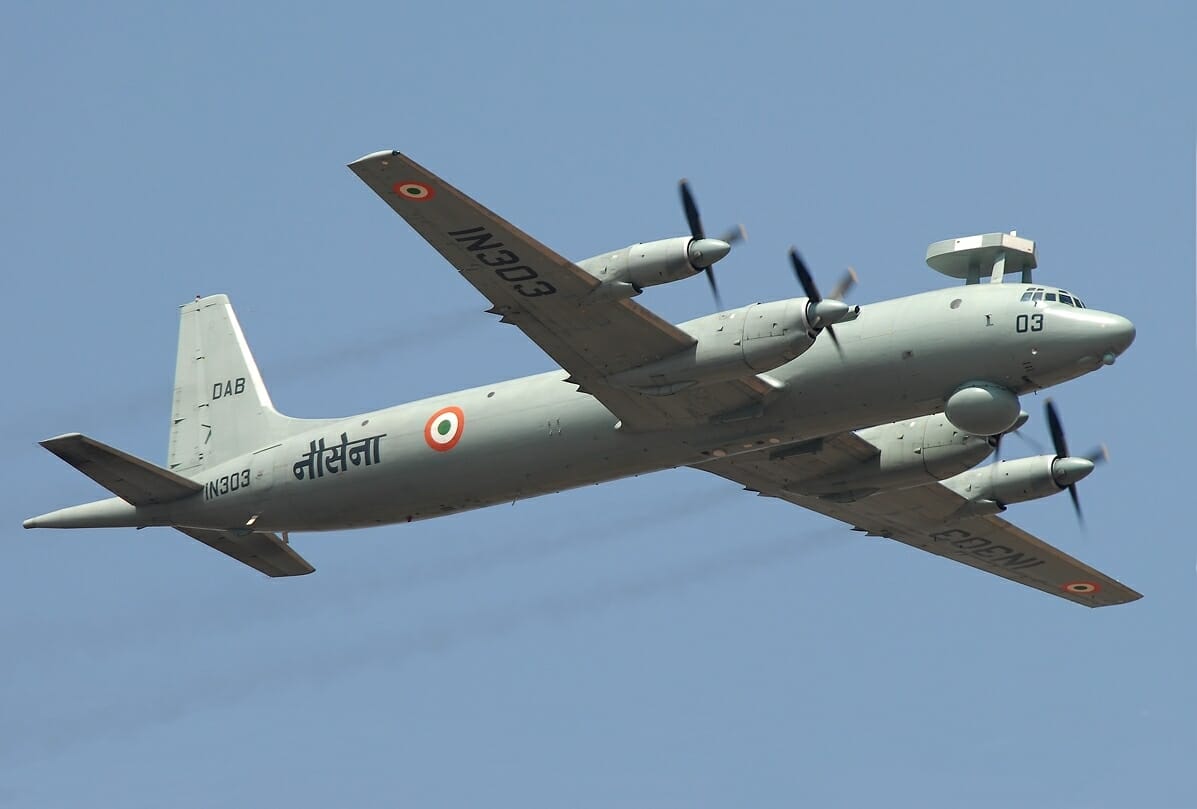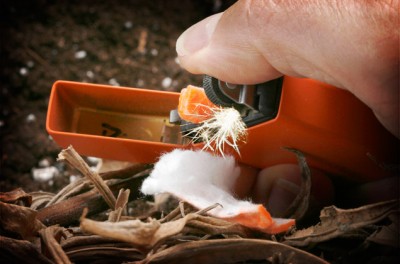 Fire is one of the most important necessities for survival. While we don’t use fire much for our day-to-day lives when living at home, that’s only because we have replaced fire with other things. Our heating, cooking, light and water purification are often taken care of by electrical means, leaving fire out of the picture. Nevertheless, if we didn’t have electricity, we would find ourselves forced back to using fire to provide for those basic survival needs.
Fire is one of the most important necessities for survival. While we don’t use fire much for our day-to-day lives when living at home, that’s only because we have replaced fire with other things. Our heating, cooking, light and water purification are often taken care of by electrical means, leaving fire out of the picture. Nevertheless, if we didn’t have electricity, we would find ourselves forced back to using fire to provide for those basic survival needs.
Fire is such an important part of survival that most survival instructors suggest keeping two primary forms and two secondary forms of fire-starters in a survival kit. That means any survival kit, whether it is a compact kit, an everyday bag or a bug-out bag. In addition, if you are planning on bugging-in in a crisis situation, you should have plenty of fire-starters in your home.
When we refer to primary and secondary fire-starters, we are basically referring to the ease by which they are used. Primary fire-starters are the easy ones which we can use just about any time. Secondary fire-starters are those that are a little harder to use. Therefore, they are usually only used when the primary methods are not available.
There’s one other thing that helps to confuse this whole issue. That is the difference between the device or method which provides the first spark, coal or flame, and the device which spreads that initial flame, so that it can grow into a fire big enough to provide us with the needed warmth and light. These fire-starters are more rightly tinder for the fire, rather than a fire-starting method; even though they are sold as “fire-starters.” While those are important as well, for the sake of this article, we’re going to ignore this category of fire-starter.
Any fire requires three things:
- Oxygen
- Fuel
- Heat
The oxygen is normally provided by the air around us. The fuel is what we are planning to burn. This is divided into categories by size and ease of ignition. To start any fire, you need to start out with combustibles that are small and easy to ignite. Once they are ignited, they are used to start larger pieces of fuel burning. The breakdown of fuel is as follows:
- Tinder – Must be something small and easy to ignite, such as dry grass, char cloth, a cotton ball soaked in petroleum jelly, dried tree bark, dried moss.
- Kindling – Small dry branches which the tinder can ignite. Generally speaking, this refers to dry branches and sticks that are the diameter of your finger. It can also mean pieces of larger branches which have been shaved off to that size.
- Fuel – The chunks of tree branches or trunks which will be burned, providing heat and light while being able to sustain itself burning for prolonged periods of time.
These three categories have been used for years and are commonly understood worldwide. While the actual materials used can vary, it is always important to make sure that they will all catch fire easily and quickly. Dry wood may be hard to come by, but it is critical for a good fire.
Primary Fire-Starters
Everyone should keep a goodly supply of primary fire-starters in their kit. The two most common are matches and butane lighters. Lighters are great in that they provide the means for starting over 1,000 fires in one compact package. However, they do have their drawbacks. A lighter can be accidentally discharged, allowing the gas to escape if the valve is inadvertently depressed in your pack or pocket. The other problem is that they do not work when cold. If it is cold out, you should keep your lighter inside your clothing, next to your body, where it will keep warm enough to work.
It Is Safe, Will Burn On Snow, In Rain & In 30 MPH Winds, All Natural Fuel…
Matches come in a wide variety of forms and types. Most stick matches today are what is known as “safety matches.” The safety comes from the fact that you can’t ignite them without having the striker from the match box. That means that if you lose the striker or it becomes wet, your matches are worthless.
For this reason, most people prefer carrying strike-anywhere matches. While harder to find, these can be struck against any rough surface, such as a convenient rock. You can even strike them against the fabric of a pair of blue jeans, if you do it right.
There is something even better than strike-anywhere matches; they are known as “stormproof matches.” These special matches will literally ignite while being rained upon. In fact, you can light them underwater and they will burn. While expensive, these are so effective that they are well worth carrying as part of your kit. In a pinch, you can use the stormproof matches even when others won’t work.
Secondary Fire-Starters
All other fire-starters are considered secondary fire-starters. While they might be just as effective, they are not as easy to use. If you are going to carry any of these fire-staring methods with you (and you should), then you should practice with them, so that you can use them easily when you need to.
Secondary fire-starters can be broken down into a few different categories:
- Using batteries
- Using the sun – which further breaks down into lenses and parabolic reflectors
- Using a spark
- Using friction
While there are other methods, such as chemicals which will spontaneously ignite when mixed together, they really aren’t practical for a survival situation. Therefore, we will limit our discussion to these three types of secondary fire-starters.
1. Starting a Fire with Batteries
If you’ve ever seen a fuse blow, you have a pretty good idea of how a battery can be used to start a fire. When the electricity in the battery passes through a conductor that is not large enough to carry the electricity, it causes the conductor to heat up and burn (assuming there is oxygen present). If the right materials are used for the conductor, this provides an excellent way to start a fire.
Story continues below video
For any fire-starter that uses batteries, it is necessary for the conductor to make contact with both poles of the battery. While this is easiest with a 9-volt battery, most survival equipment doesn’t use 9-volt batteries. Using two AA or AAA batteries works well. It is even possible to start a fire with one AA or AAA battery, although it is may take a little longer to ignite.
- Steel wool – This is a very popular method. 0000 steel wool, pronounced “four ought,” is essentially very fine steel wire. To use it, you take a small piece of the steel wool and spread it apart and then brush it over both battery contacts. This will actually cause the steel wool itself to ignite and burn, oxidizing the steel wool (making it rust). Since it is an oxidation process, it is important to protect the steel wool from moisture before using, as rusted steel wool won’t work.
- Gum wrappers – Some gum wrappers work very well for this type of fire-starter. For it to work you need one of the gum wrappers which is aluminum foil and paper combined. While most types of chewing gum no longer use this type of wrapper, some still do. The gum wrapper needs to be cut, so that there is a point where it is only about 1/8 inch wide. When put across the battery contacts, that narrow point is where the wrapper will start to burn. The paper will keep it burning.
If you are stranded in a car and need to start a fire, the car’s batter makes a great fire-starter. To use the battery, connect jumper cables to both battery terminals and briefly touch the jumper cables together, this will provide hot sparks, which can be used to start a fire.
2. Starting a Fire with Lenses and the Sun
Almost any lens can be used to start a fire from the sun, as long as it is a convex lens. A convex lens will cause the sun’s rays to focus on a single point, increasing the light at that point. Since the sun’s light readily converts to heat when it strikes an object, that can cause enough heat to ignite your fire. 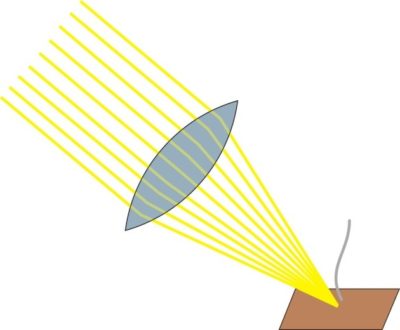
Concave lenses don’t work for this like convex lenses do, because the lens will cause the sun’s rays to dissipate, rather than to focus on a single point. Some common lenses that you might want to try include:
- Eyeglasses (put the convex side towards the sun)
- Magnifying glass
- Fresnel lens
- Camera lens
- Binoculars or a lens scavenged out of a pair of binoculars
- A clear water bottle, filled with water
You can even make a lens out of ice. All you need is to find a frozen stream or pond and cut a piece of clear ice out of it. With your knife, roughly shape the block of ice to make two opposite sides convex. Then use your hands to smooth the two convex sides, finishing the lens.
To use a lens for starting a fire, you have to discover the focal point of the lens. That’s the point where the light all comes together. You can easily find this point by adjusting the distance between the lens and your tinder. When the point of light is the smallest, you have discovered the focal length.
Reflectors and the Sun
Reflectors work under the same theory as lenses, concentrating the sun’s rays to a point. The major difference is that the sun is reflected to focus it, rather than being focused through a lens. For this to work, you need a parabolic reflector. Fortunately, we find those all around us, even if we don’t realize it. Some common parabolic reflectors include:
- The reflector in a flashlight
- The reflector in a car headlight
- The bottom of a soda can (needs to be polished, which can be done with ashes or toothpaste)
- A stainless steel mixing bowl
- A satellite antenna (will need to have the inside of the bowl covered with a reflective material, such as aluminum foil)
You can even buy a solar cigarette lighter and put it in your kit as an emergency fire-starter. These are small parabolic reflectors with a holder for the cigarette. Anything flammable can be put in the cigarette holder to start a fire. 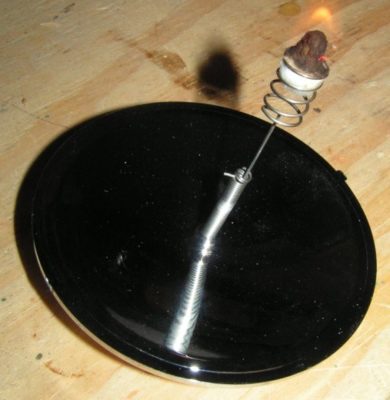
When using a parabolic reflector you have to find the focal length, just as you have to with a lens. The only real difference is that the focal point will be in front of the reflector instead of behind it. For flashlight reflectors and headlight reflectors, this point has already been defined. Just look at how the bulb sits in the reflector and measure the distance between the filament in the bulb and the back of the reflector. Your tinder should be in that same spot.
3. Starting a Fire with Sparks
There are a number of commercially manufactured fire-starters which function by creating hot sparks. These sparks can be directed into tinder, igniting it. While they all provide the same sort of sparks, they differ considerably in operation, although they all use magnesium, which burns readily. If you buy any of these, make sure that you practice with it, so that you are familiar with using it before you need to.
- Metal Match – Of the various types of sparkers for starting a fire, the metal match is one of the oldest and most effective. The “match” consists of a block of magnesium. Some shavings are scraped off the match with a knife, allowing them to fall on the tinder. Then the back edge of the knife and match are struck against each other, causing sparks to fall on the magnesium shavings.
- Ferrro Rod – The ferro rod is an adaptation from the original metal match. Like the metal match, it uses magnesium and steel to create a spark. However, you don’t start by scraping off shavings into the pile of tinder. All the rod does is provide the spark. The rod usually comes with a striker, which is a strip of steel. You start with the rod on the tinder and the striker against the base of it. When the rod is pulled up, it causes sparks.
- Push Down Sparker – In order to make the metal match or ferro rod easier to work with, someone came up with the bright idea of mounting them together in a push-down holder. This device, called a BlastMatch, contains a magnesium rod and a steel striker. To use it, the BlastMatch is held in a way that pushes the striker up against the side of the magnesium and then pushed down, causing it to spark. An internal spring allows the unit to automatically reset.
Story continues below video.
Since these fire-starter methods are only producing sparks, they need very good tinder to work with. While dry grass or moss works, you’re better off using them with a chemically treated tinder that will catch fire more quickly. The spark should start your tinder smoldering, which you can nurse into a flame by blowing softly on it.
4. Starting a Fire with Friction
When all else fails, you can make a fire-starter out of wood, depending upon friction to start the fire. This is the old “rub two sticks together” that many people talk about. However, rubbing two sticks together really isn’t all that effective, unless you really know what you’re doing.
- A Bow Drill – The bow drill is extremely effective, although difficult to work with. Besides something to use as a bow, you will need a piece of soft wood to use for a hearth, a drill rod and a bearing block to hold the drill rod in place.
The hearth needs to be prepared by cutting a notch into the side of it. The point of this notch is where the drill rod is placed. This allows the burning sawdust to fall off the hearth, forming a coal. To use the drill, place the drill rod on the hearth and hold it there by pressing down on the top of it with the bearing block held in one hand. The other hand pulls the bow back and forth, spinning the drill rod.
A bow drill will produce a coal within about a minute of drilling, if you use dry wood and have prepared it properly. While difficult, this method works extremely well and can be done even if you don’t have any other fire-starters with you. That makes it the ultimate fire starting method for survival.
With all of these fire starting methods, you are only going to have either a small flame, a spark or a coal. That means that you need to be ready to use what you get to start your tinder burning. In addition to providing good tinder, expect to have to nurse the fire into life, blowing on the beginnings of it to get flames to appear. When they do, you can gradually add larger and larger pieces of kindling, until your fire is big enough to ignite your fuel.
Sign up for Off The Grid News’ weekly email and stay informed about the issues important to you


